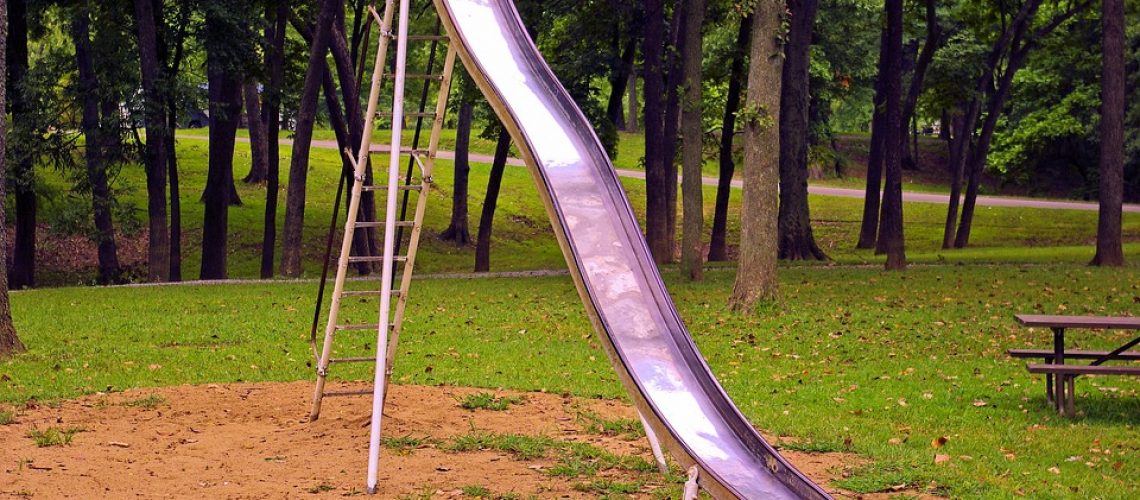Slides are a common source of childhood joy and exhilaration. Now, the term “slide” is tossed around education circles to define any “learning loss” that doesn’t meet our pre-determined expectations. I worry this deficit language is blinding us to the bigger issues at play.
The “Buzz Words”
What is “Learning Loss”?
From a cognitive science perspective, learning loss is very real. The brain “loses” learning all the time. We call it forgetting. It would be overwhelming if the brain paid attention to, let alone remembered, every sensory input received. Instead, it selects the important pieces of information and “forgets” the less relevant ones (Stemmann & Freiwald, 2019). In other words, the brain is designed for “learning loss”.
Even information that makes it through the initial gauntlet of selection and becomes a memory is easily lost. Neural pathways that are not regularly activated can atrophy. In other words, school-based learning that is not used is often lost. This is what contributes to the very real “summer slide”.
Summer Slide vs. Covid Slide
Comparing “Covid slide” to “summer slide” is ill-informed, at best. It is also offensive to those in education working tirelessly to support their students’ mental, emotional, and cognitive growth during a global pandemic.
“Summer slide” is a regression from academic proficiency as a result of time away from learning. Certain neural pathways around academic content get ignored. Consequently, students tend to lose 1-3 months of learning during the summer (Kuhfeld, 2019).
Within the context of a traditional school year, a “summer slide” is to be expected. However, the “summer slide” theory does not best explain what is happening now.
The term “Covid slide” is being used to define the decrease in academic learning during a pandemic. This is not a result of time away from learning (ie. summer break). Schools have been in session all year.
“Covid slide” is the mismatch between what we think students should be able to learn and what they have actually learned during a global pandemic. The phrase is amplifying our need to learn more about the conditions necessary for students to learn.
Stress, trauma, social isolation, loss, and more ALL impact the brain’s ability to learn at its fullest capacity (Frazier et al., 2019). Marginalized students have been experiencing this long before Covid-19. Combine the stressors with less-than-ideal instructional options and we see why “Covid slide” is expected.
I would hypothesize that students have likely learned less academic content this year, compared to others. Perhaps the billions of dollars spent on testing this year will confirm this. My hope is those results will awaken policymakers, administrators, and teachers to the need to modify our education system to match how students’ brains actually learn.
We must seize this opportunity. Millions of students are at risk of being pushed down the multitude of slides, all landing them further in the margins.
Many practices and policies in our current education system were designed well before we knew much about how students learn best. What is our excuse now? We know better. It is time to do better. Let’s seize the moment and redesign our schools to be centered around what our students need to accelerate their learning.
3 Ways to Build a Student-Centered Education
- The heart of student-centered learning is the brain. Learn more about how belonging, relationships, emotions, relevance (and more) impact the brain’s capacity to learn.Instead of wishing students would pay attention better (or for longer), learn what the brain naturally pays attention to, and upgrade your teaching to connect to those factors. Instead of hoping your students will show up motivated to learn factoring trinomials, connect your instruction to their brain’s natural hard-wired motivators. When teachers know how to design learning with their students’ brains in mind, learning skyrockets.
- Stretch our thinking about education to include more than academic content. Our mindset around what “education” means is the secondary virus we are all battling. The decades-old battle of “whose job is it to teach these kids to _________?” must end. Too many students are being lost on the frontline of those battlefields.Prioritize students’ mental, emotional, and physical health. That means more SEL, more physical activity, and more equitable environments and instruction. These are all pre-requisites for strong academic learning.
- Loosen our grip on the rigid expectations of where students should The idea that all your students should be at the same level on the same day is laughable by most cognitive neuroscientists. There are far too many variables that create the uniqueness of each student.Be thorough in discovering what your students already know and are capable of doing. Then set high expectations, individualized goals, and get to work.
What the Brain Can Teach Us About Change
Slides tend to be constructed of hard, rigid plastic. Similarly, there are elements of our education system that were constructed from a rigid one-size-fits-all mold.
The human brain is also plastic. Not the hard, rigid kind that slides are made of. More like the soft moldable kind your contact lenses are made of.
This neuroplasticity is an inherent property of the brain that allows it to change. It is ultimately what allows learning – a change in the brain – to happen (Tovar-Moll et al., 2016).
Neuroplasticity is the most hopeful discovery in our lifetime. Brains can and do change.
If we want our education system to survive this pandemic, we need to follow the example of the brain – adjust, modify, and change based on the inputs we are receiving.
Because of neuroplasticity, our student’s brains have changed dramatically this past year.
Can our education system do the same?

